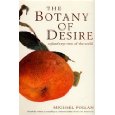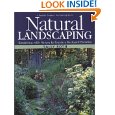
I left my garden during the height of the summer for a month. The weather was hot and rainy while I was gone evident by the profusion of weeds I found when I came back. Photo is not great, but yes, there is basil under all those weeds! At first I could not even see the plants from the weeds. This particularly pesky weed is Prostrate Knotweed, Polygonum aviculare. An annual weed, it spreads widely and very difficult to eradicate. Just finding the root is a real challenge!It covered all my vegetable beds even in places where I had laid black weed prevention cloth.I also found abundant Crabgrass some plants as wide as a child’s swimming pool! Not exaggerating… In my perennial beds, Prostate Spurge, Euphorbia maculata, Ground Ivy, Healall, Deadnettle, Dandelion and my archenemy, Canada Thistle! Clearly, I had a lot of work ahead!

Here, one small area after weeding.
This brings me to the purpose of this essay. WEEDING. It requires tenacity, discipline and above all, the right frame of mind. To all those who have asked, no, there are no shortcuts. I always advise against using synthetic herbicides . Besides affecting our health and that of our beloved pets, they disrupt the delicate web connecting the millions of organisms that populate our soil. I do recommend the use of organic controls such as corn gluten which is a pre-emergent that prevents seed from germinating. A very economical -and eco friendly- homemade herbicide mix I use: 1 Gallon vinegar, 1/4 cup of Dawn and 2 cups of epson salts. Mix in sprayer and apply. Works quite well on hard surfaces like brick patios and driveways, or applied directly on deep rooted weeds like dandelion. Best sprayed on a sunny day. A cover of mulch on bare areas is a good option too. Here are some more tips to make weeding more manageable:
Be consistent. Pull them when you see them and do not let them go to seed or you will have them forever.
Get those roots. If you are doing the work, might as well get the whole plant. Most can regenerate within weeks if some of the root is left behind.
Do one area at the time. This has the benefit of giving you that sense of accomplishment by seeing your results without being overwhelming. You will be surprised by what you can accomplish in just one hour a day.
Plant densely. Weeds are opportunistic. If there is available exposed soil they will be the first to populate. So use perennial ground covers in the front of your borders to keep them out.
Make the best of it. Look at all the positive aspects: Spending time outdoors, can be a great workout once you incorporate some stretching and moving around, music or podcasts really help, my IPod happens to be an indispensable tool when weeding. Or just tune in to the sounds of nature. I am always surprised of how much is going even in a very small garden! So, get “in the zone”and weed on…
“Many gardeners will agree that hand-weeding is not the terrible drudgery that it is often made out to be. Some people find in it a kind of soothing monotony. It leaves their minds free to develop the plot for their next novel or to perfect the brilliant repartee with which they should have encountered a relative’s latest example of unreasonableness.” ~Christopher Lloyd, The Well-Tempered Garden, 1973


































